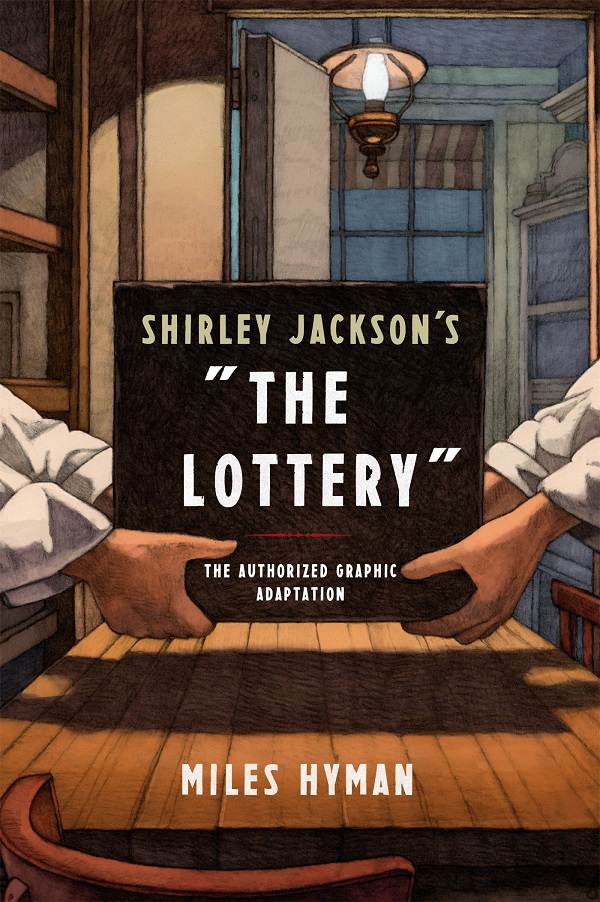When I was in high school, I actually wasn’t a bookworm. (I trust you to keep that secret.) I actually found it very difficult to sit down and read required readings like The Great Gatsby or Pride and Prejudice. It wasn’t until college that I could find joy in those classics. I would have loved it though, if in high school I had known about the slew of literature classics that have been reinvented as graphic novels! Oh, that would have made it so much easier to read them. While, I didn’t know about them then, I’m happy to pass along these 12 adapted classics to you if you struggle with those old texts, or if you just love all things graphic novel.
1. Masterpiece Comics by R. Sikoryak
If you don’t know where to start when it comes to the classics, this book is a great launching pad. Sikoryak parodies the gamut, from Dante to Brontë.

Source: Amazon
2. A Wrinkle in Time: The Graphic Novel by Madeleine L’Engle, illustrated by Hope Larson
Larson is the first to illustrate this beloved classic, and she does so with vivid detail that brings a new and welcomed element to L’Engle’s most popular novel.

Source: Amazon
3. The Metamorphosis by Franz Kafka, adapted and illustrated by Peter Kuper
Now, this is a classic I actually got into in high school. It was probably my morbid side seeping out, but even though I vividly imagined the story in my own mind, I’d still love to get my hands on this illustrated adaptation. Kuper’s illustrations bring a new level of creepy to this already unsettling narrative.

Source: Amazon
4. Pride and Prejudice by Jane Austen, adapted by Nancy Butler, illustrated by Hugo Petrus
Marvel has created this 5 volume series adapted from Austen’s original work. Throughout the series, Butler introduces a slightly more modern tone in the language, which, combined with the illustrations, makes this much easier to grasp for younger or less invested readers. Plus, Marvel has adapted all of Austen’s more cherished works into graphic novels, so if Pride and Prejudice isn’t your thing, you can check out Northanger Abbey or Sense and Sensibility.

Source: Amazon
5. The Lottery by Shirley Jackson, adapted and illustrated by Miles Hyman
Ever disturbing, The Lottery is made even more haunting with Hyman’s noir style illustrations.

Source: Amazon
6. Jane Eyre The Graphic Novel by Charlotte Brontë adapted by Amy Corzine, illustrated by John M. Burns and Terry Wiley
A team of talented artists, working with Classical Comics, collaborated to make this beautiful adaptation of one of Brontë’s most enduring works.
7. The Little Prince by Antoine de Saint-Exupéry, illustrated by Joann Sfar
Now that there’s a Netflix animated version of the classic children’s book, there might be less desire to see the classic illustrated, but Sfar brings this short yet poignant classic to life with his imaginative illustrations. Plus, The Little Prince is packed with nuance, so there’s always something to be learned from every version: film, graphic novel, or otherwise.

Source: Amazon
8. The Complete Don Quixote by Miguel de Cervantes, adapted and illustrated by Rob Davis
Eye Classics and Rob Davis bring readers a stylized version of the comical classic, complete with the rendering of an archetypal tall and thin hero, Don Quixote, and his goofy short and chubby sidekick, Sancho Panza.

Source: Amazon
9. Romeo and Juliet by William Shakespeare, adapted and illustrated by Gareth Hinds
There are so many adaptations of Shakespeare’s most well-known play, but this one stands out with its loyalty to the original text, and Hinds’ diverse twist on the characters.

Source: Amazon
10. Kindred by Octavia E. Butler, adapted by Damian Duffy, illustrated by John Jennings
Although the original novel Kindred was published on the cusp of the 1980s, the themes within it, like race and gender, still remain very relevant today. Duffy and Jennings bring the narrative to a new and more visceral level in this graphic novel format.

Source: Amazon
11. The Tale of Genji by Murasaki Shikibu, illustrated by Yoshitaka Amano
The Tale of Genji is often referred to as the world’s first novel, though Amano brings the ancient tale into the present with bright, full page illustrations.

Source: Amazon
12. Fagin the Jew by Will Eisner
Unlike the previous books on the list, this adaptation is not named after the novel that Eisner used as inspiration (Oliver Twist by Charles Dickens). In this version, Eisner writes from Fagin’s point of view and turns anti-Semitic themes on their head by giving Fagin the voice of the narrative.

Source: Amazon
The fact that these classics have been adapted for modern readers doesn’t diminish their timelessness, it only strengthens the tales in order that they keep being reworked and thoughtfully reintroduced to young readers for decades to come.
YouTube Channel: MercysBookishMusings
Featured image via Criminal Element
h/t Bustle




